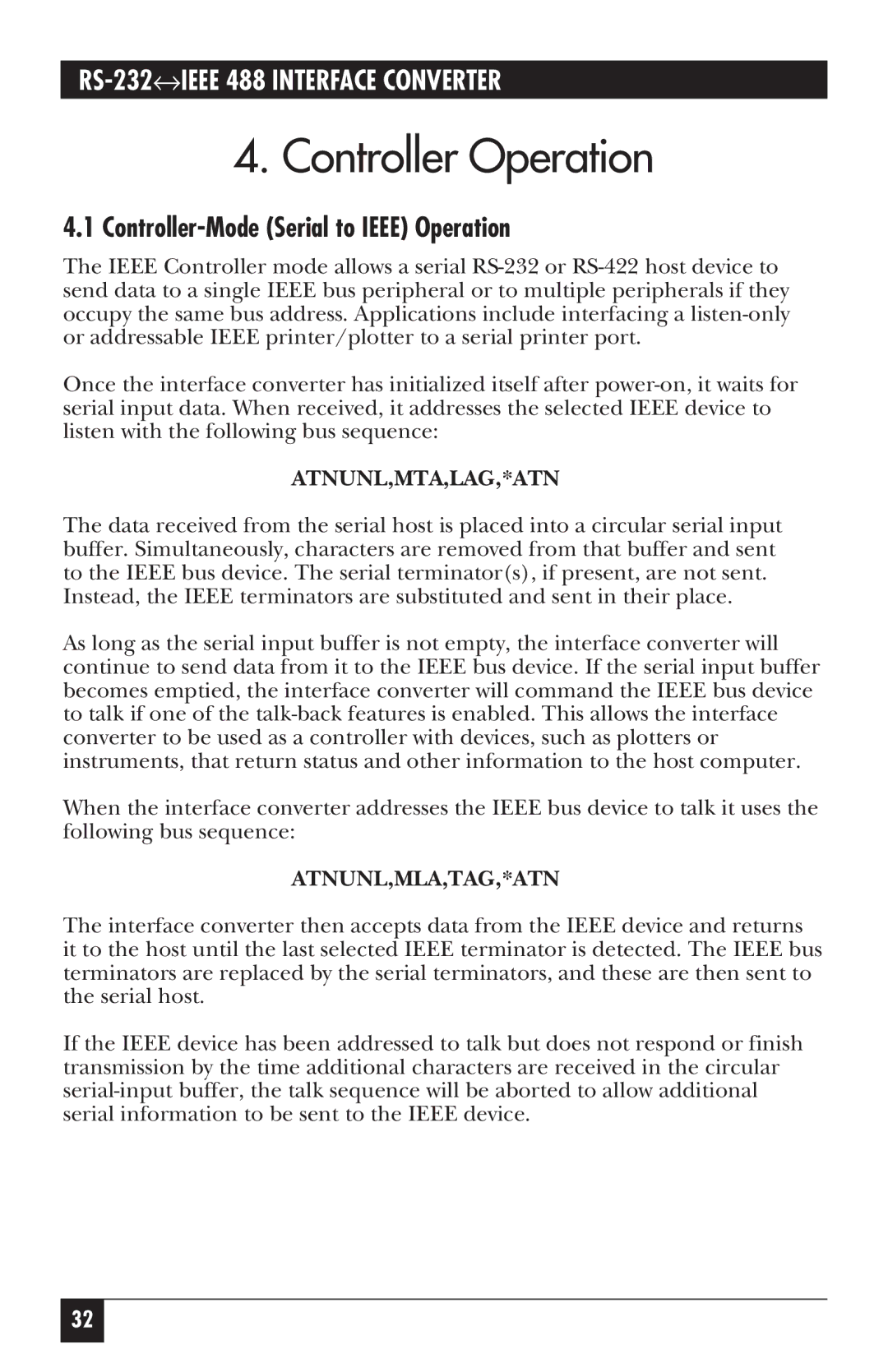
RS-232↔IEEE 488 INTERFACE CONVERTER
4.Controller Operation
4.1Controller-Mode (Serial to IEEE) Operation
The IEEE Controller mode allows a serial
Once the interface converter has initialized itself after
ATNUNL,MTA,LAG,*ATN
The data received from the serial host is placed into a circular serial input buffer. Simultaneously, characters are removed from that buffer and sent to the IEEE bus device. The serial terminator(s), if present, are not sent.
Instead, the IEEE terminators are substituted and sent in their place.
As long as the serial input buffer is not empty, the interface converter will continue to send data from it to the IEEE bus device. If the serial input buffer becomes emptied, the interface converter will command the IEEE bus device to talk if one of the
When the interface converter addresses the IEEE bus device to talk it uses the following bus sequence:
ATNUNL,MLA,TAG,*ATN
The interface converter then accepts data from the IEEE device and returns it to the host until the last selected IEEE terminator is detected. The IEEE bus terminators are replaced by the serial terminators, and these are then sent to the serial host.
If the IEEE device has been addressed to talk but does not respond or finish transmission by the time additional characters are received in the circular
32
